In a world increasingly attuned to health and sustainability, plant-based protein sources have stepped into the spotlight, offering a compelling alternative to traditional animal-derived options. Beyond the familiar beans and lentils lies a diverse and nutrient-rich landscape, where seeds, grains, and innovative foods promise to nourish both body and planet. This article unpacks the essentials of plant-based proteins—exploring what they are, where to find them, and how they fit into a balanced diet—inviting readers to discover the vibrant variety that lies at the heart of plant-powered nutrition.
Table of Contents
- Understanding the Nutritional Profile of Plant-Based Proteins
- Exploring Legumes and Their Protein Power
- The Role of Whole Grains in Plant Protein Intake
- Nuts and Seeds as Essential Protein Contributors
- Combining Plant Proteins for Complete Amino Acid Profiles
- Practical Tips for Incorporating Plant-Based Proteins into Daily Meals
- Q&A
- Insights and Conclusions

Understanding the Nutritional Profile of Plant-Based Proteins
Plant-based proteins are diverse and offer a spectrum of nutritional benefits that cater to various dietary needs. Unlike animal proteins, these sources often come packed with fiber, antioxidants, vitamins, and minerals. For example, legumes such as lentils and chickpeas are not only rich in protein but also contribute iron and folate, essential for energy and cellular function. Nuts and seeds add a dose of healthy fats and magnesium, supporting heart health, while whole grains provide steady-release carbohydrates to fuel your day. Understanding these qualities helps in creating balanced meals that maximize both flavor and nutrient density.
It’s important to recognize that not all plant-based proteins are complete on their own; most lack one or more essential amino acids. However, combining various sources throughout the day can easily fulfill protein needs without animal products. Consider this quick comparison:
| Protein Source | Protein Content (per 100g) | Notable Nutrients | Amino Acid Profile |
|---|---|---|---|
| Quinoa | 14g | Magnesium, Folate | Complete |
| Chickpeas | 19g | Fiber, Iron | Lysine-rich, Methionine-low |
| Almonds | 21g | Vitamin E, Healthy Fats | Low in Lysine |
| Brown Rice | 7g | Magnesium, B Vitamins | Methionine-rich, Lysine-low |
By embracing a variety of these plant-forward options, you unlock the full spectrum of essential nutrients needed for optimal health — all while keeping meals vibrant and exciting.
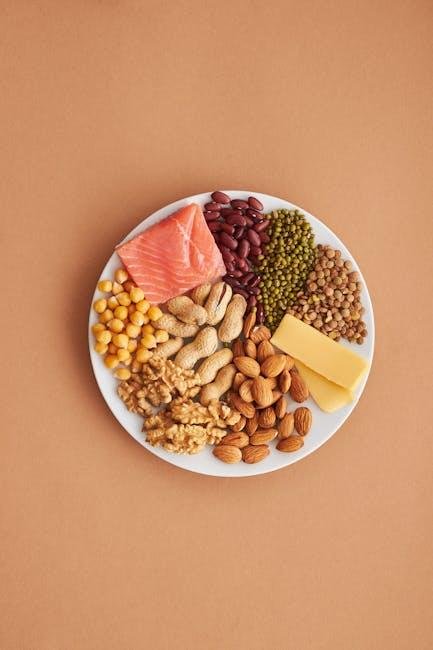
Exploring Legumes and Their Protein Power
Legumes stand out as a powerhouse in the plant-based protein world, offering not just an impressive protein content but also a wealth of other nutrients that support a balanced diet. From lentils and chickpeas to black beans and peas, these versatile seeds pack a potent mix of amino acids, fiber, and essential minerals. Their unique composition makes them ideal for those seeking to build muscle, manage weight, or simply nourish their body with wholesome, plant-derived foods. Including legumes in your meals can elevate both flavor and nutritional value without the need for animal products.
Beyond their protein benefits, legumes contribute significantly to sustainable eating practices. They enrich soils with nitrogen, reducing the need for synthetic fertilizers, and their cultivation generally has a lower environmental impact compared to animal farming. Here’s a quick look at their protein richness and fiber content:
| Legume | Protein (per 100g) | Fiber (per 100g) |
|---|---|---|
| Lentils | 9g | 8g |
| Chickpeas | 8.9g | 7.6g |
| Black Beans | 9g | 8.7g |
| Green Peas | 5g | 6g |
- Rich in plant-based protein: Supports muscle recovery and growth.
- High in dietary fiber: Promotes digestive health and keeps you fuller longer.
- Low in fat: Ideal for nutritious, heart-healthy meals.
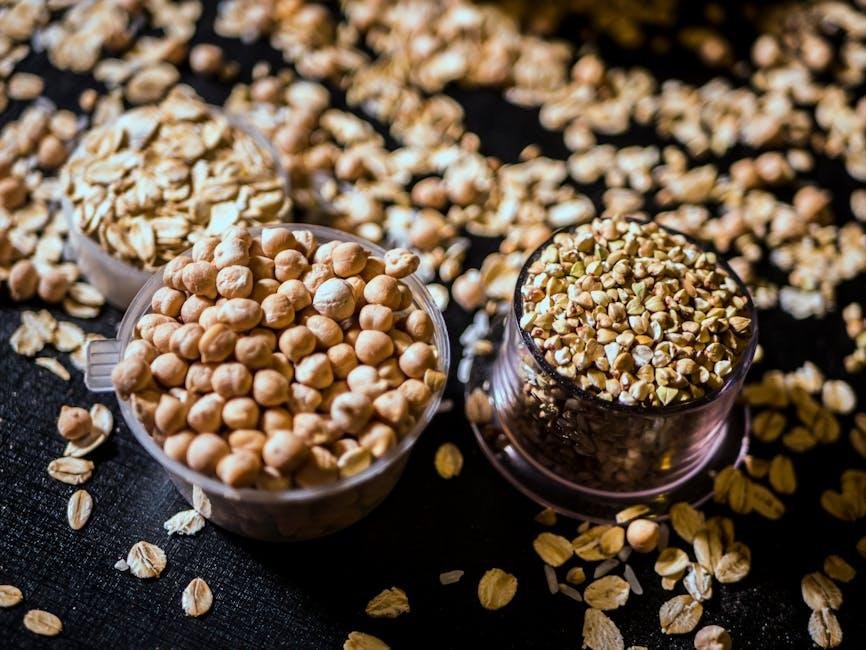
The Role of Whole Grains in Plant Protein Intake
Incorporating whole grains into your diet is a smart way to boost your plant-based protein intake while reaping a host of nutritional benefits. Unlike refined grains, whole grains retain the bran, germ, and endosperm, providing a rich source of both fiber and essential nutrients. These grains include quinoa, brown rice, oats, barley, and farro, all of which contribute not only protein but also important vitamins and minerals such as magnesium, iron, and B vitamins. Beyond protein, whole grains help to stabilize blood sugar levels and support digestive health, making them a cornerstone of balanced plant-based nutrition.
Whole grains stand out for their ability to complement other plant proteins by providing a more complete amino acid profile. While many plant proteins may lack one or more essential amino acids, combining whole grains with legumes or seeds creates a powerful synergy that supports muscle repair and overall wellness. To illustrate, here’s a quick guide to common whole grains and their approximate protein content per cooked cup:
| Whole Grain | Protein (grams) | Notable Nutrients |
|---|---|---|
| Quinoa | 8 | Magnesium, Iron |
| Brown Rice | 5 | Fiber, Selenium |
| Oats | 6 | Beta-glucan, Manganese |
| Barley | 4 | Fiber, Copper |
| Farro | 7 | Protein, Phosphorus |
- Versatile: Can be used in salads, bowls, porridges, or as side dishes.
- Satiating: Rich fiber content aids in appetite control.
- Complementary: Pairs well with pulses to enhance protein quality.
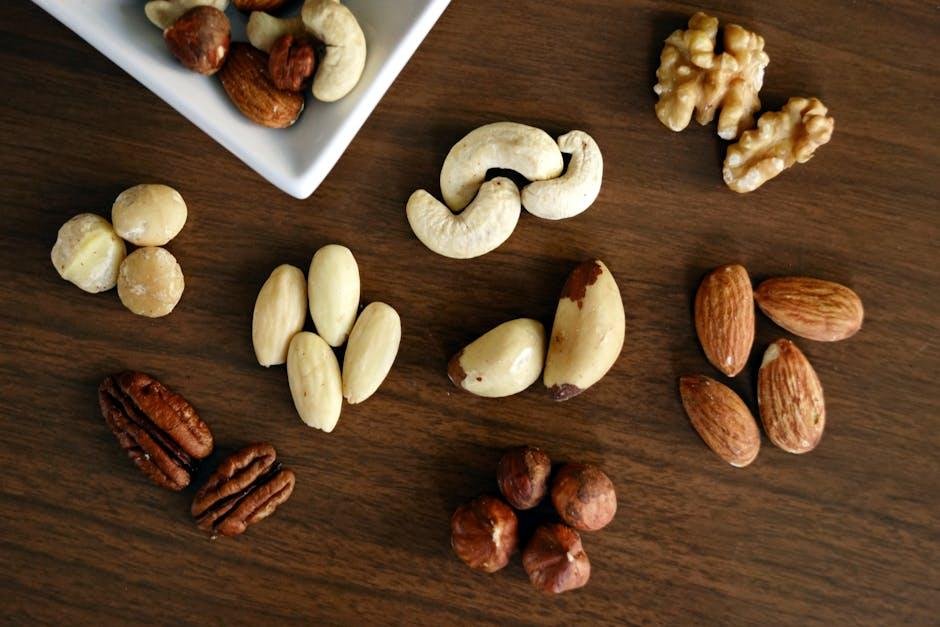
Nuts and Seeds as Essential Protein Contributors
Nuts and seeds are more than just crunchy snacks—they’re nutritional powerhouses that play a vital role in plant-based diets. Packed with complete proteins, healthy fats, and essential micronutrients, these tiny wonders contribute significantly to meeting daily protein requirements. Whether it’s almonds, chia seeds, or walnuts, incorporating a variety of nuts and seeds can enhance both the flavor and nutritional profile of your meals. Their protein isn’t just abundant; it’s also paired with fiber and antioxidants, making them a wholesome option for sustained energy and muscle repair.
To understand their protein punch, consider the table below which highlights some popular options and their approximate protein content per 1-ounce serving. These sources are not only versatile but also portable, making them ideal for quick snacks or ingredients in smoothies, salads, and baked goods. Adding just a handful to your diet can bolster your protein intake while providing essential vitamins like magnesium, zinc, and vitamin E.
| Nut/Seed | Protein (g) | Key Nutrient |
|---|---|---|
| Almonds | 6 | Vitamin E |
| Chia Seeds | 5 | Omega-3 Fatty Acids |
| Pumpkin Seeds | 7 | Magnesium |
| Walnuts | 4 | Antioxidants |
- Mix and match: Combine different nuts and seeds to get a full range of amino acids.
- Sprinkle liberally: Add crushed nuts or seeds on salads, oatmeal, or yogurt for extra protein and crunch.
- Nut butters: A creamy way to increase protein intake, perfect on toast or blended into smoothies.
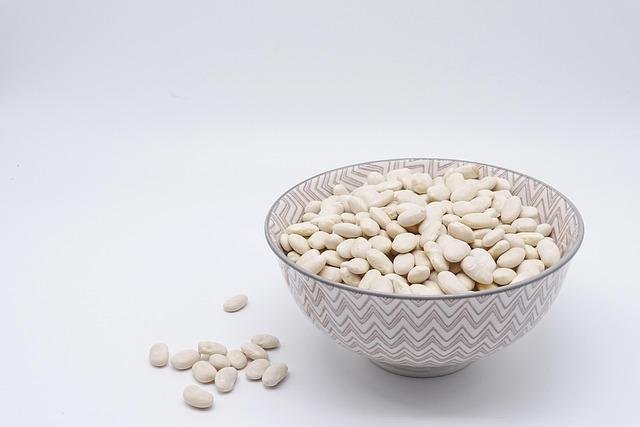
Combining Plant Proteins for Complete Amino Acid Profiles
When relying on plant-based proteins, it’s essential to understand that not all sources provide all nine essential amino acids in sufficient amounts. However, by thoughtfully combining different plant proteins throughout the day, you can easily achieve a complete amino acid profile that supports muscle maintenance, repair, and overall health. For example, grains such as rice, wheat, and corn tend to be low in lysine but high in methionine, while legumes like beans, lentils, and chickpeas have the opposite pattern—high in lysine but lower in methionine. This natural complementarity means that mixing grains and legumes in meals can fill in nutritional gaps.
- Rice + Beans: A classic duo rich in essential amino acids.
- Hummus + Pita Bread: Mediterranean favorite with balanced proteins.
- Peanut Butter + Whole Grain Bread: Convenient and nutrient-dense.
To visualize the synergy, here is a simple breakdown of amino acid content in some common plant pairings using a WordPress-styled table:
| Combination | High in Lysine | High in Methionine | Complete Profile? |
|---|---|---|---|
| Rice + Black Beans | ✓ Beans | ✓ Rice | ✓ Yes |
| Quinoa + Lentils | ✓ Lentils | ✓ Quinoa | ✓ Yes |
| Whole Wheat Bread + Peanut Butter | ✓ Peanut Butter | ✓ Whole Wheat | ✓ Yes |
| Corn + Pinto Beans | ✓ Pinto Beans | ✓ Corn | ✓ Yes |
By incorporating a variety of plant-based proteins in your diet, you can confidently meet your nutritional needs without relying on animal products. Remember, it’s not necessary to combine these proteins within a single meal—eating complementary sources throughout the day works just as well for creating a balanced and nourishing amino acid intake.

Practical Tips for Incorporating Plant-Based Proteins into Daily Meals
To seamlessly integrate plant-based proteins into your daily meals, consider starting with small, manageable swaps. Replace traditional animal proteins with options like lentils, chickpeas, or tofu in your favorite dishes. For example, toss chickpeas into your salads for an extra protein punch or use black beans as a base for hearty tacos. Smoothies can be effortlessly fortified by adding a scoop of pea protein or a tablespoon of chia seeds. Experiment with whole grains such as quinoa or farro, not only because they’re protein-rich but also because they add texture and flavor variety to your meals.
Smart meal planning can make a huge difference when embracing plant proteins. Keep a variety of them on hand—think canned beans, nuts, and seeds—to create quick protein-packed meals anytime. Here’s a simple guide to balancing your daily intake:
| Plant Protein | Protein per 100g | Best Uses |
|---|---|---|
| Lentils | 9g | Soups, stews, salads |
| Tofu | 8g | Stir-fries, scrambles, sandwiches |
| Quinoa | 4g | Salads, bowls, side dish |
| Chia Seeds | 17g | Smoothies, puddings, baking |
| Almonds | 21g | Snacks, toppings, baking |
- Mix and match proteins: Combining legumes with whole grains provides a complete amino acid profile.
- Snack smart: Opt for roasted chickpeas or nut butter on whole-grain toast.
- Batch cook: Prepare large portions of beans or lentils to save time during busy weekdays.
Q&A
Q&A:
Q1: What exactly are plant-based protein sources?
A1: Plant-based protein sources are foods derived from plants that provide the essential building blocks of protein—amino acids—necessary for our body’s growth, repair, and overall function. Unlike animal proteins, these come from legumes, nuts, seeds, grains, and vegetables.
Q2: Are plant proteins as good as animal proteins?
A2: Plant proteins can be just as beneficial, but they often differ in their amino acid profiles. While most animal proteins are “complete” (containing all nine essential amino acids), many plant proteins are “incomplete.” However, by combining different plant-based foods — like rice and beans or peanut butter and whole-grain bread — you can get a complete amino acid profile.
Q3: Which are the top plant-based protein sources?
A3: Some heavy hitters in the plant protein world include lentils, chickpeas, quinoa, tofu, tempeh, black beans, edamame, chia seeds, hemp seeds, and almonds. These foods pack a protein punch while also offering fiber, vitamins, and minerals.
Q4: How much protein do I need daily, and can plant-based diets meet these needs?
A4: Protein needs vary by age, gender, activity level, and health goals, but generally, adults require about 0.8 grams per kilogram of body weight. Many people on plant-based diets meet or exceed their protein needs by eating a varied array of plant foods throughout the day.
Q5: What about digestibility—are plant proteins harder to absorb?
A5: Plant proteins sometimes have slightly lower digestibility due to fiber and antinutrients that may interfere with absorption. But cooking techniques like soaking, sprouting, and fermenting can improve digestibility. Overall, a balanced plant-based diet provides plenty of usable protein.
Q6: Are there any environmental benefits to choosing plant-based proteins?
A6: Absolutely. Plant-based proteins generally require fewer natural resources like water and land, and they produce fewer greenhouse gases compared to animal proteins. Choosing plant proteins often aligns with more sustainable and eco-friendly eating habits.
Q7: Can athletes rely solely on plant protein?
A7: Yes! Many athletes thrive on plant-based diets. With careful planning and attention to protein variety and quantity, plant-based proteins can support muscle growth, recovery, and performance just as effectively as animal proteins.
Q8: Any tips for incorporating more plant-based proteins into my meals?
A8: Try adding lentils or beans to soups and salads, swapping meat for tofu or tempeh in stir-fries, sprinkling seeds on your breakfast oats, or experimenting with quinoa bowls. Variety and creativity can help you enjoy a well-rounded, protein-rich plant-based diet.
This Q&A creatively unpacks the essentials of plant-based proteins with clarity, helping readers understand nutrition choices without bias or jargon.
Insights and Conclusions
As the petals of our exploration wilt gently into the close of this article, it’s clear that plant-based proteins offer a vibrant palette of options—each with its own story, texture, and nutritional note. Whether you’re a seasoned herbivore or simply curious to sprinkle more greens onto your plate, these sources provide more than just sustenance; they present a chance to nourish the body and the planet alike. Embracing plant-based proteins is not just a dietary choice but a step toward a more mindful connection with the food that fuels us. So, the next time you stare down a pantry or peruse a menu, consider letting these humble harvests take center stage—inviting a world of flavors and benefits into your daily rhythm.



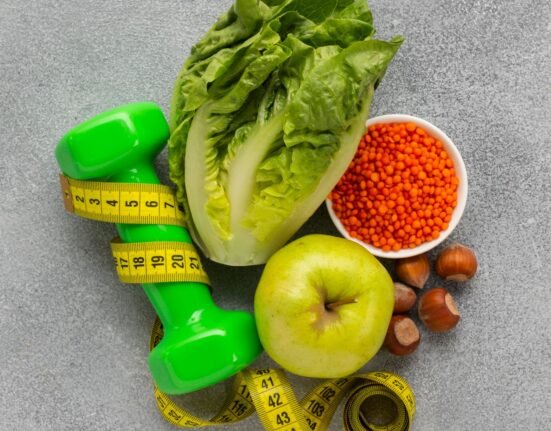




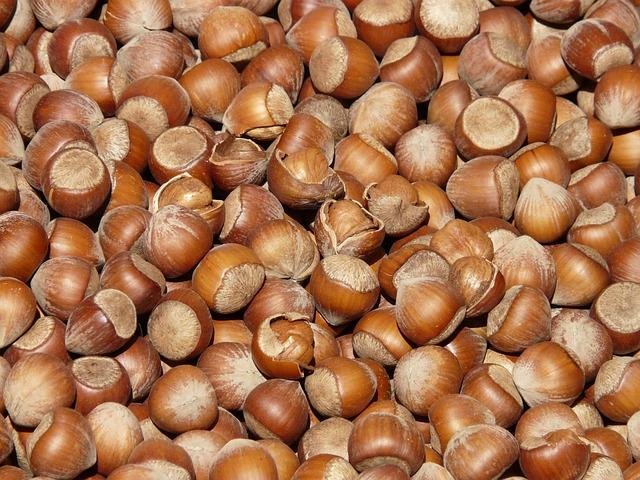

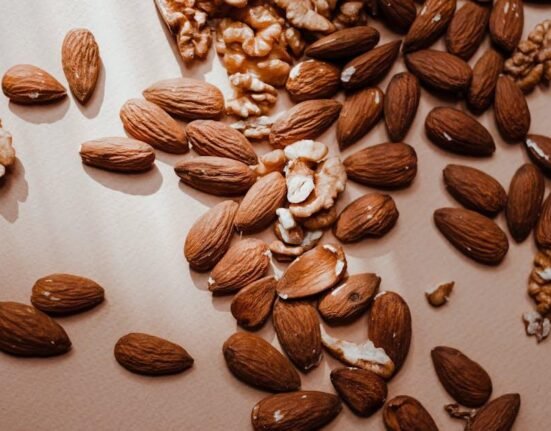




Leave feedback about this